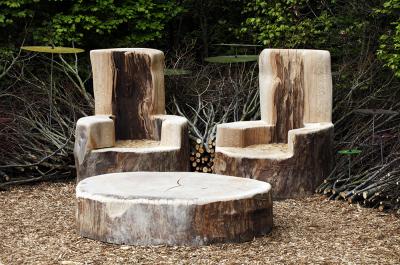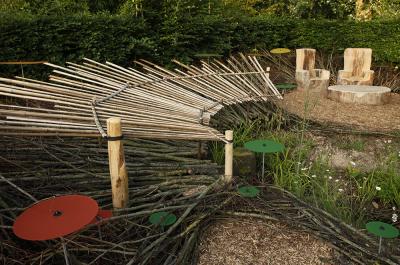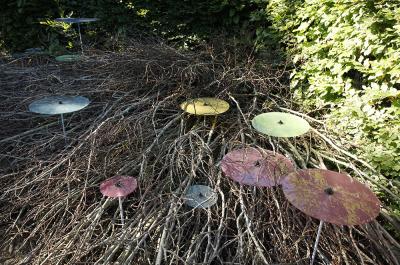19. Dynamiques en ligne
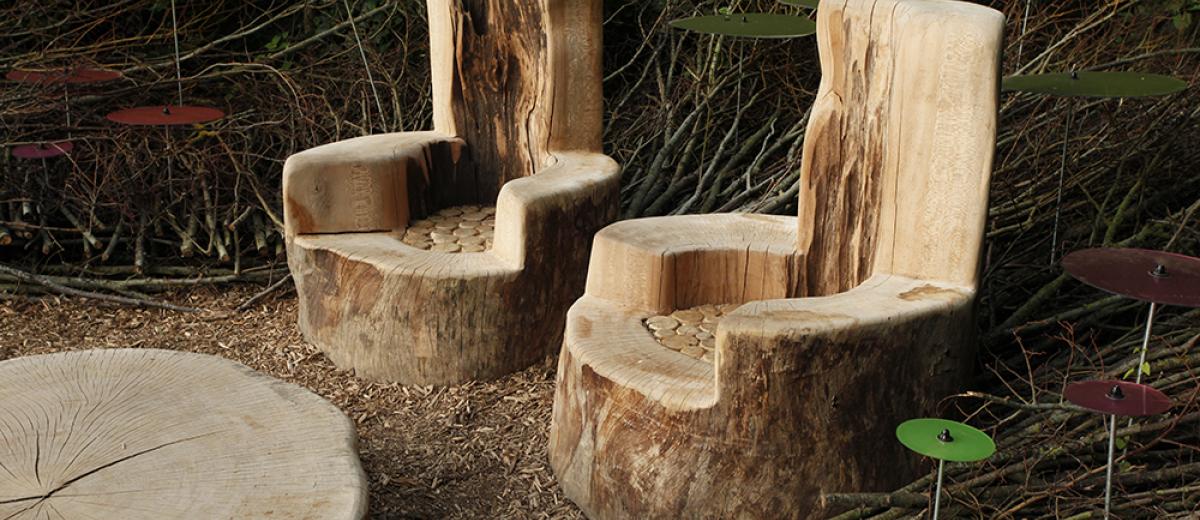
A design of cut branches and natural raw materials forms a small, intimate garden. The main plants are symbolised by coloured disks as they would appear on a design plan. If working exclusively with natural dynamics, as they do here, landscape architects must work with a plan of what is possible, prior to the project, and no longer a planting plan. Every month, a few coloured disks will be replaced by real plants, symbolically enabling the 6 years development to be understood within the space of 6 months. Three compact cameras will enable the progress of this project to be followed on-line throughout the festival on the “Côté Jardin” programme’s website.
The so-called “Benjes” technique (named after the German ecologist, 1937-2007), used by this garden, involves making hedges by piling up cut branches, thus considerably speeding up the natural dynamic of recolonisation. Basic techniques are also to be seen, such as “a hollow” to create a wet area and a pebbly mound to create an arid area. The more highly developed “Rain Comb” shows a simple and aesthetic way of reorienting natural elements from time to time, in this case by concentrating rainwater. Techniques that encourage wild life can also be seen, in particular those that help cultivation.
The “Côté Jardin” programme is keen to show each week that the garden is more than ever the experimental field for new relationships between humankind and its environment. For Thierry Levaillant, who is in charge of chronicling the development of the programme, today’s gardens must bring together agronomic and botanical knowledge with environmental engineering techniques, and gardening philosophies like the “garden in motion”, with all this devoted to having a positive environmental footprint. This project is a stylized representation of one of these gardens, in which the natural dynamics replace planting work to a large extent.
designer
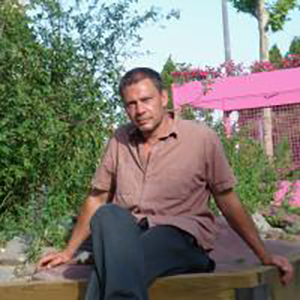
Thierry Levaillant was born in 1964 in Vincennes, France. Landscape advisor, he specialises in integrating sensitive sites into the landscape and opening them to the general public. He works at Wabi Sabi, which he created in 1998. It is important to him to promote modest landscaping, acting as an intermediary between the life of the site and its contact with the public, with the aim of creating mutual respect and pleasure for all. Moreover, Thierry Levaillant is regularly involved in artistic projects (1% cultural, artistic landscape intervention competitions, ephemeral gardens). These experiments demonstrate a continuing desire to innovate and invent in relation to the public and their environment.
